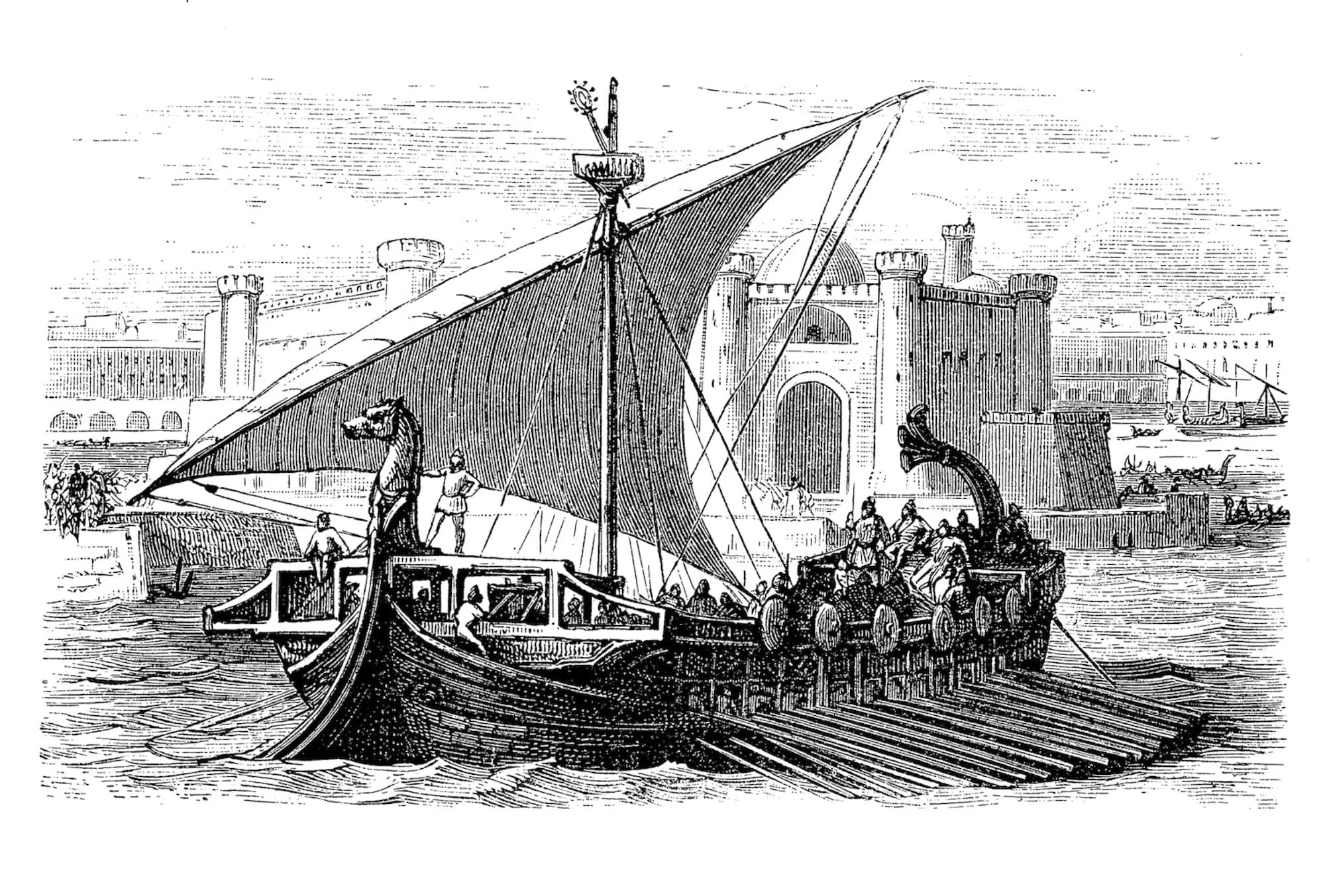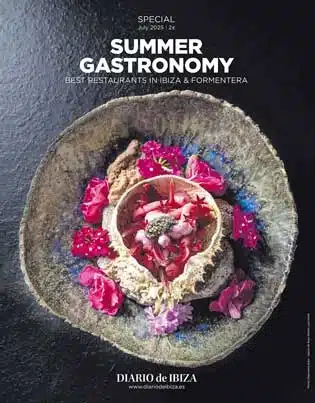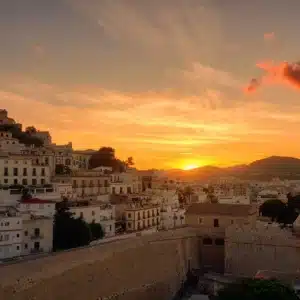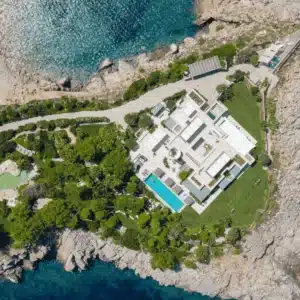Ibiza is an island of dualities. By day, it shimmers under the Mediterranean sun, its golden sands and turquoise waters painting a picture of serenity. By night, it pulses with the rhythm of music, a siren’s call to those seeking revelry. But beneath its modern glamour lies a story far older than its world-famous nightlife—a story of fearless seafarers, sacred rituals, and an ancient civilization that left an indelible mark on the island.
To wander through Ibiza’s rugged cliffs and salt-kissed shores is to follow the footprints of the Phoenicians, those enigmatic mariners who, nearly three thousand years ago, carved the first chapters of the island’s history. Their legacy whispers through time, waiting for the curious traveler to listen.
The first footsteps: when the Phoenicians reached Ibiza
In the 8th century BCE, the Mediterranean was a vast blue expanse, crisscrossed by the wooden ships of the Phoenicians. These masterful traders and navigators, hailing from the distant shores of present-day Lebanon, were not mere explorers—they were visionaries, transforming the sea into a living highway of commerce and culture.

Ibiza, with its strategic location between the Iberian Peninsula and North Africa, became one of their most treasured outposts. Here, they found what they needed to thrive: abundant salt, fertile lands, and natural harbors that promised safe anchorage. But beyond trade and practicality, they saw something greater—a land worth settling, shaping, and sanctifying.
Sa Caleta: the birthplace of Ibiza’s story
Hidden on Ibiza’s southern coast, far from the neon lights and bustling beaches, lies a place where time seems to stand still. Sa Caleta, a humble cluster of ochre-colored ruins, is all that remains of the first Phoenician settlement on the island. But to stand among these sunbaked stones is to feel the presence of an ancient world.
This was not a city of grandeur, nor a place of kings. It was a working village, a small yet thriving hub of traders, fishermen, and artisans. Here, life unfolded in the shadow of low, rounded houses made of mudbrick and stone. Narrow alleys wove through the dwellings, where families gathered around crackling hearths, weaving baskets, molding clay, and baking bread.
Yet, for reasons unknown, Sa Caleta was abandoned in the late 7th century BC. Its settlers relocated to what is now Dalt Vila, the future fortified city whose historic walls are now a UNESCO World Heritage Site.
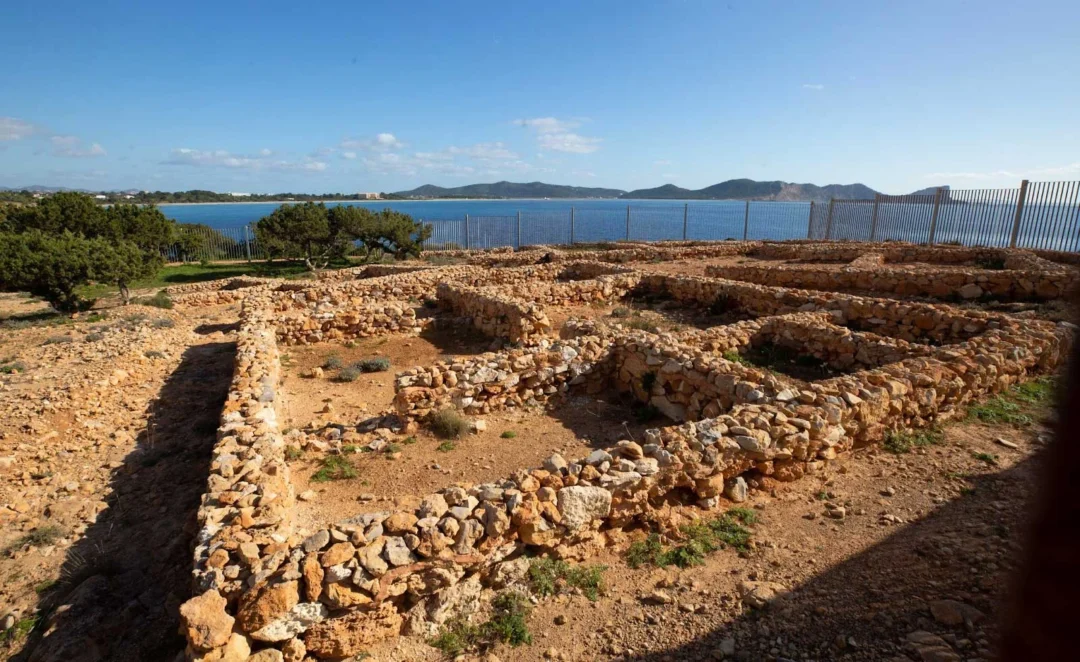
The city of the dead: Puig des Molins Necropolis
While Sa Caleta tells of life, Puig des Molins speaks of death. Nestled in the heart of Ibiza Town, this sprawling necropolis is one of the most astonishing remnants of the Phoenician and later Punic civilizations. Beneath the earth, thousands of tombs form a labyrinth of quiet repose, each one a silent testimony to the beliefs and traditions of an ancient people.
Here, the Phoenicians laid their dead to rest with objects meant to guide them into the afterlife—delicate perfume bottles, terracotta figurines, and even intricately carved amulets believed to ward off evil. The famous ‘Tanits‘, statuettes representing the revered goddess of fertility and the heavens, were placed within these tombs, ensuring a passage to the world beyond.
Today, visitors can step into this realm of shadows, descending into rock-cut hypogea where the air is thick with mystery. Each carved chamber, each artifact unearthed, is a whisper from the past, inviting the living to ponder the customs and spirituality of those who came before.

Es Culleram: a sacred cave in the hills
High above the rolling landscapes of Ibiza’s northern coast, where the scent of wild rosemary lingers in the breeze, lies a hidden sanctuary: Es Culleram. Carved into the limestone cliffs, this cave was no ordinary refuge—it was a place of devotion, a sacred temple to the goddess Tanit.
The Phoenicians, and later the Carthaginians, honored Tanit with offerings of pottery, jewelry, and ritual sacrifices, their prayers carried into the darkness of the cave. Archaeologists have uncovered hundreds of figurines here, each one a symbol of reverence, a silent plea to the divine.
Standing at the entrance of Es Culleram today, one can almost hear the hushed chants of ancient worshippers, their faith echoing through the corridors of time.
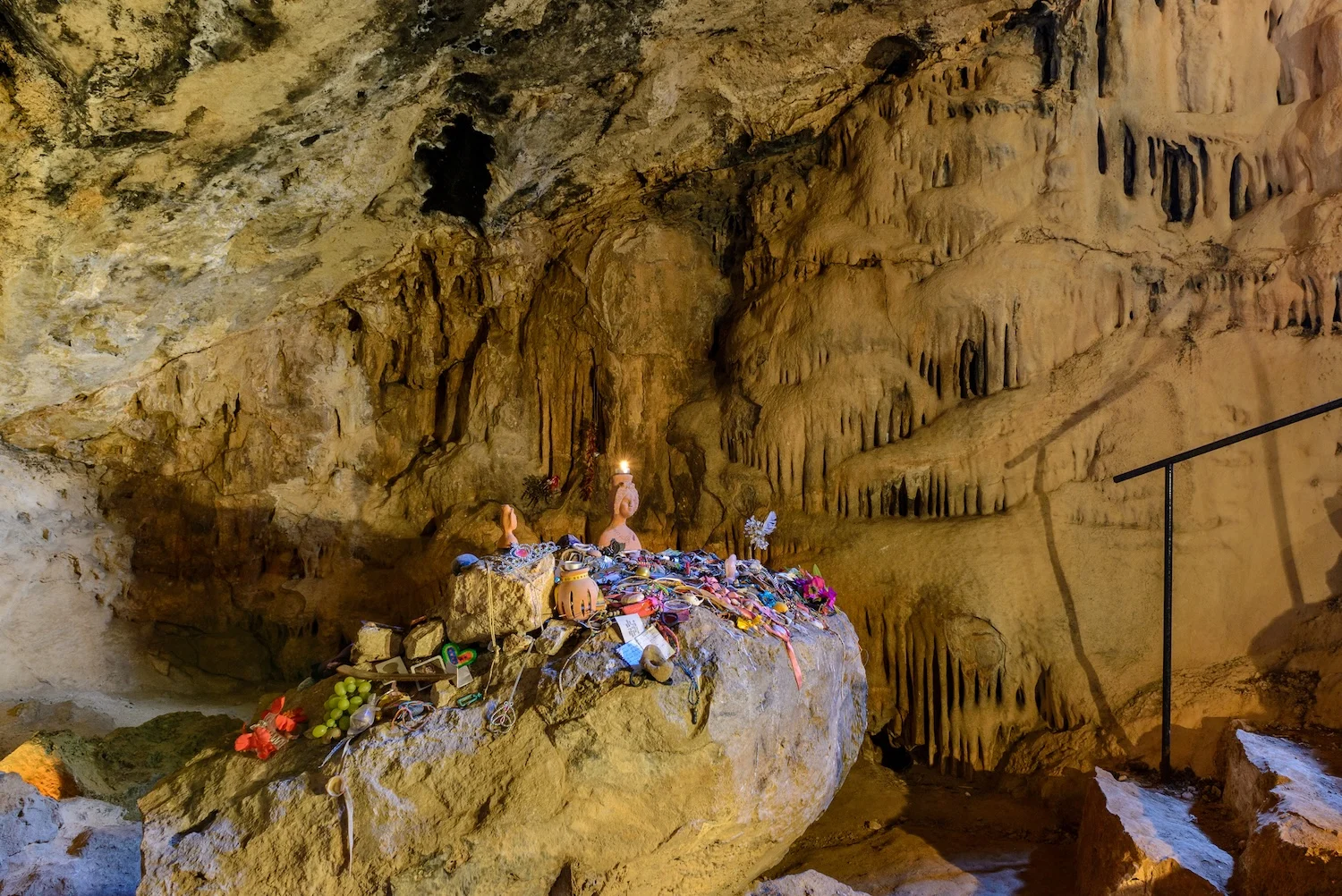
A legacy etched in stone and spirit
The Phoenicians did not stay forever. Their presence, like the tides, receded, giving way to new conquerors, new cultures, and new ways of life. But their essence lingers. It lingers in the salt flats of Ses Salines, where they first harvested the island’s ‘white gold’. It lingers in the very name of Ibiza, derived from the Phoenician Iboshim, meaning “dedicated to Bes”, their god of music and dance.
It lingers in the thousands of tombs of Puig des Molins Necropolis. And it lingers in the spirit of Ibiza itself—a place of freedom, trade, and celebration, much as it was in the days of the Phoenicians.

Walking in the footsteps of the Phoenicians: your journey begins
For those who seek more than just sun and sand, Ibiza’s ancient past offers an experience unlike any other. Walk among the ruins of Sa Caleta, let the silence of Puig des Molins speak to you, and feel the sacred hush of Es Culleram. Visit the museum of the Necropolis to witness artifacts that have survived millennia, their stories etched in clay and stone.
Ibiza is more than a paradise—it is a portal. A place where history breathes beneath your feet, where the past is never truly lost. The island waits, ready to share its secrets.
Will you listen?
